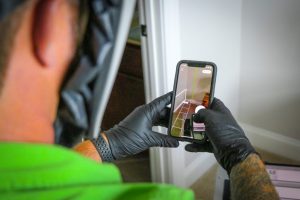

According to the World Health Organization (WHO), “all types of asbestos cause lung cancer, mesothelioma, cancer of the larynx and ovary, and asbestosis,” making it a highly toxic chemical that negatively impacts tens of thousands of Americans every year.
That being said, the dangers of asbestos exposure are common knowledge, so it may lead one to wonder: Is asbestos banned in the United States?
To clarify the rocky history of asbestos in our country, we have outlined an overview of legislative regulations and attempts at reform that have been made over the past several decades:
The 1970s:
- 1970 — Already heavily ingrained in both the construction and manufacturing industries, the Clean Air Act (intended to improve air quality and public health) was amended in 1970 to classify asbestos as a hazardous air pollutant.
- 1976 — Congress passed the revolutionary Toxic Substances Control Act (TSCA), thereby providing the Environmental Protection Agency (EPA) with the ability to both regulate and restrict toxic substances, including asbestos among others.According to the Centers for Disease Control (CDC), this was accomplished so that the government may better “regulate chemical substances and mixtures that present an unreasonable risk of injury to health or the environment.”
The 1980s:
- 1986 — The Asbestos Hazard Emergency Response Act of 1986 (AHERA) was officially passed, meaning the EPA was granted the authority to both inspect and remove asbestos products from within schools.
- 1989 — Designed to comprehensively ban the importation, manufacturing, processing, and sales of asbestos/asbestos products in the United States, the EPA issued the Asbestos Ban and Phase-Out Rule (ABPR).The move reportedly came after a decade of research on the consequences of asbestos exposure in individuals.
The 1990s:
- 1991 — Essentially reversing the short-lived victory of the 1989 ABPR, asbestos manufacturers fought the EPA’s ban in the Corrosion Proof Fittings v. Environmental Protection Agency lawsuit.Thus, the ban was overturned by the Fifth Circuit Court of Appeals. Though the court acknowledged asbestos’s role as a carcinogen, it ultimately decided not only that the EPA’s ban was not “the least burdensome alternative” to regulation, but also that the organization could not “prove that its regulations [would] increase workplace safety.”
The Early 2000s:
- 2002 — Senator Patty Murray, a Democratic state senator from Washington, introduced the new Ban Asbestos in America Act, proving to be the first attempt at a complete asbestos ban since the 1991 overturning of the ABPR. It also aimed to raise awareness of the risks of asbestos exposure, as well as support scientific research and public acknowledgment thereof.
- 2007 — The Ban Asbestos in America Act was passed unanimously by the Senate but was ultimately never signed into law.
The 2010s:
- 2016 — Under the Frank R. Lautenberg Chemical Safety for the 21st Century Act — a modern amendment to the original 1976 TSCA — the EPA named asbestos one of the top ten chemicals worthy of priority action.
- 2017 — The EPA began its formal review of asbestos under the aforementioned act. However, the organization stated it would decidedly not evaluate “legacy” asbestos (or pre-existing asbestos in buildings and other manufacturing products); rather, it would focus solely on new asbestos and asbestos products being “currently manufactured, processed and distributed in the U.S.”
- 2019 — After being introduced in 2018, the EPA finalized the Significant New Use Rule (SNUR), which requires manufacturers who use asbestos and other hazardous chemical substances for a “significant new use” to give the EPA 90 days notification before moving forward.In essence, this allows the EPA to track the reintroduction of banned asbestos products as opposed to outright banning them.Additionally, the new Alan Reinstein Ban Asbestos Now Act (ARBAN) was also introduced to the Senate in 2019.
Looking Forward:
- 2021 — Designed to prohibit “the manufacturing, processing, and distribution of asbestos or any mixture or article containing asbestos,” ARBAN has gained bipartisan support. That being said, it failed to garner Congressional attention in 2020 as a result of political upheaval and the subsequently busy schedule of the legislative calendar.Thus, the bill has yet to reach the floor of either the Senate or the U.S. House of Representatives.We remain hopeful, however, that it will be voted upon and approved sometime during the next year.
THE BOTTOM LINE
At the end of the day, the bottom line is no — asbestos is not banned in the United States, albeit there are certain regulations currently in place.
That all being said, the probability that asbestos already exists in your property just might be higher than you think, which is why Luce Air Quality offers thorough asbestos surveys! Find peace of mind and ensure your long-term health when you call our team of indoor environmental experts to investigate your residential or commercial property for asbestos!
To learn more or schedule your survey, contact Luce Air Quality today by calling (904) 803-1014 or emailing info@luceairquality.com!


